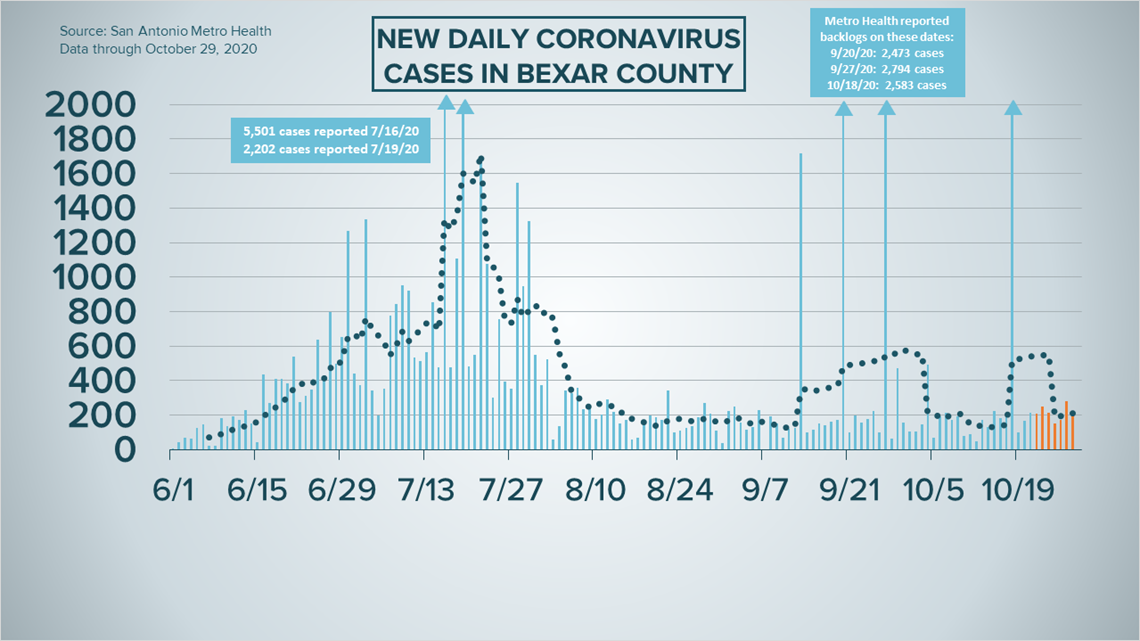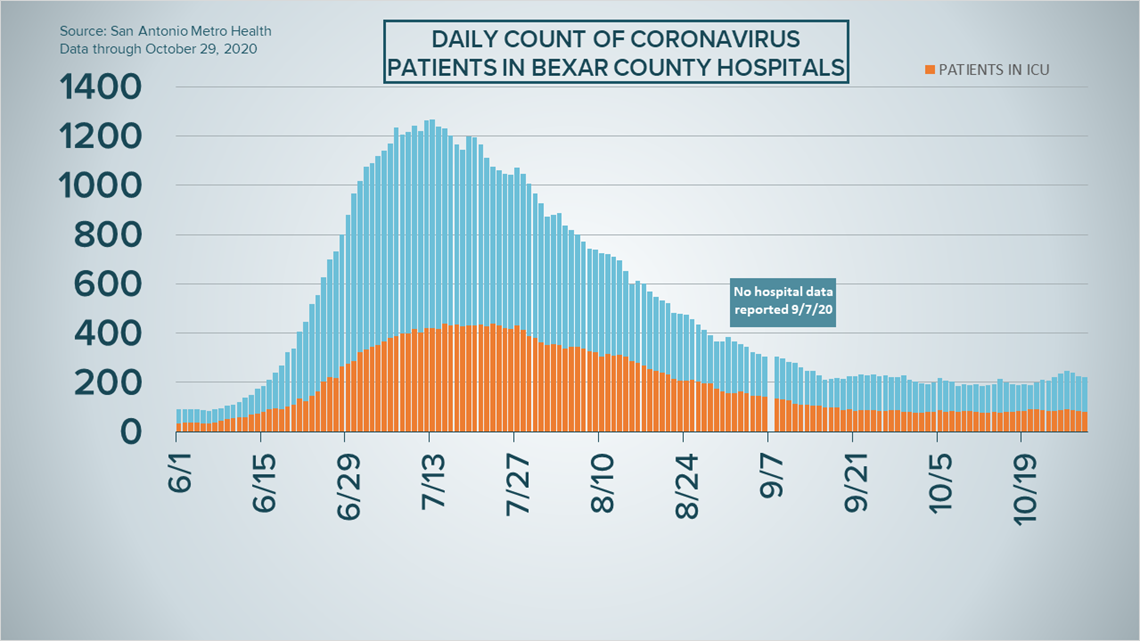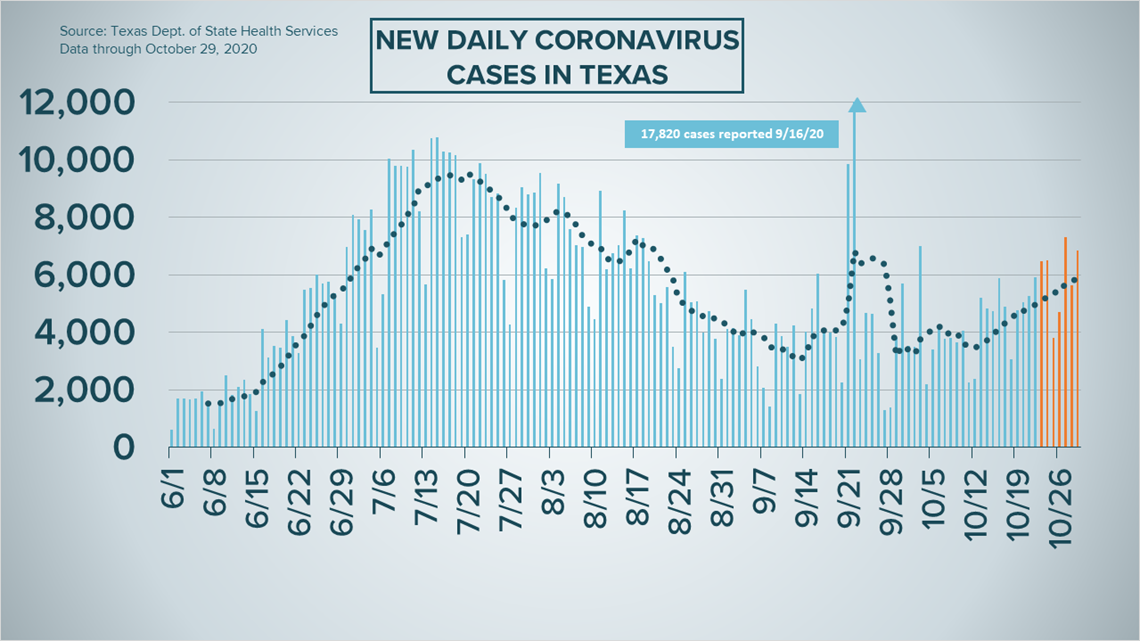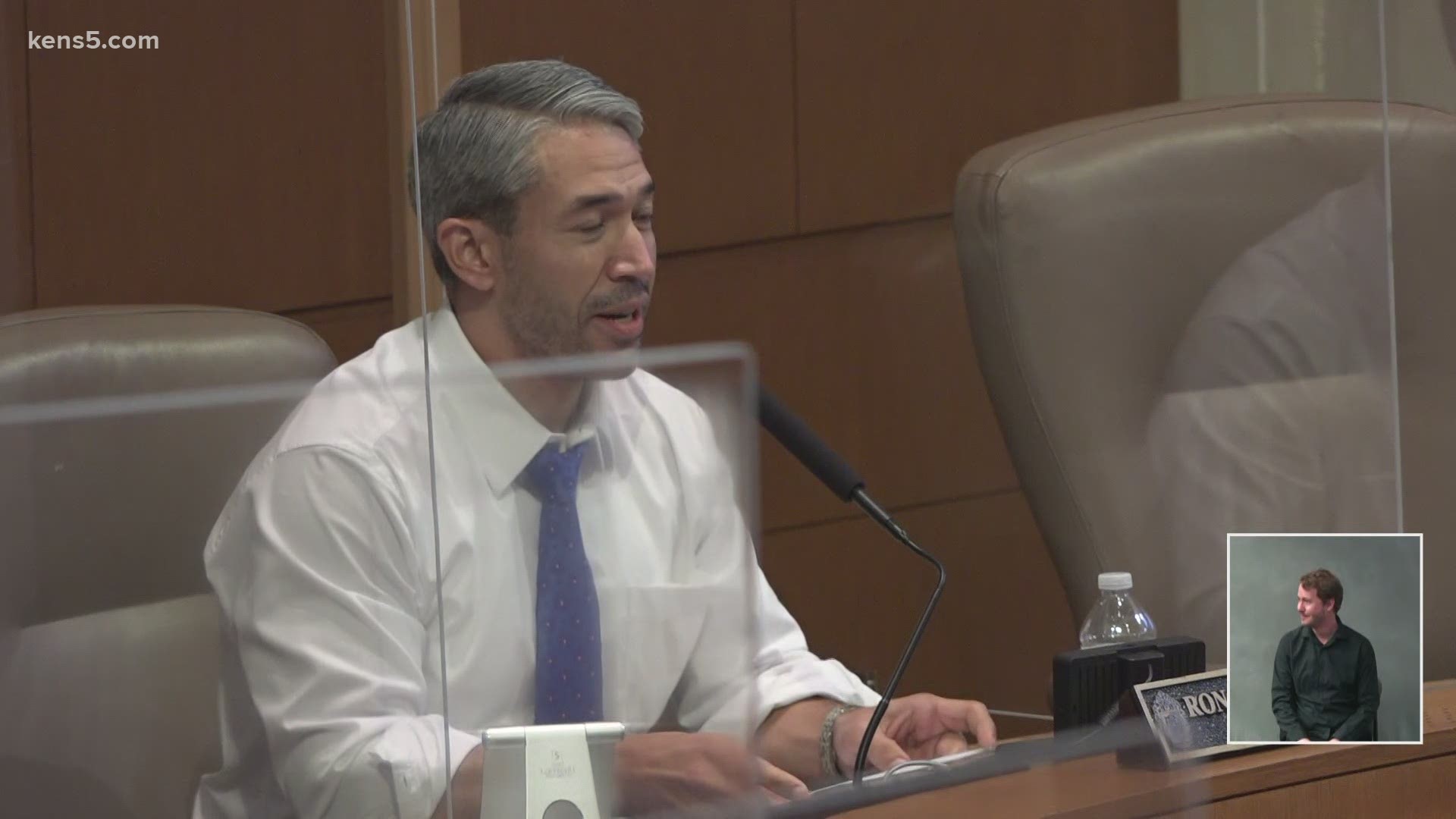SAN ANTONIO — We're tracking the latest numbers from the coronavirus pandemic in San Antonio and across Texas. Here are the latest numbers reported by Bexar and surrounding counties:
- Bexar County: 201 new cases were reported Thursday, bringing the total number of cases for the county to 65,423. No new deaths were also reported, keeping the county's death toll at 1,250.
- Comal County: The county reported nine new COVID-19 cases Thursday morning. No new virus-related deaths were reported. There have been a total of 3,764 cases of COVID-19 in the county – including 2,872 lab-confirmed cases – while 120 county residents have died. County officials say there are 127 active coronavirus cases, and 3,517 residents are considered recovered.
- Hays County: Officials in Hays County on Thursday reported 16 new cases in the county and one additional virus-related death. As of Thursday, there are a total of 6,119 lab-confirmed cases in the county (347 of which are active), and the death toll is up to 87. 5,685 residents have recovered from the virus.
How Bexar County is trending
We've tracked how many coronavirus cases have been confirmed in Bexar County from the time officials began reporting cases in March 2020. The graphic below shows the number of cases since June and charts those daily case numbers along a 7-day moving average to provide a more accurate picture of the overall coronavirus case curve in our area and the direction we're trending amid the pandemic.
On Thursday, San Antonio Mayor Ron Nirenberg reported 201 additional coronavirus cases in Bexar County, calling this "a critical moment in the course of this pandemic."
It's the second straight day with at least 200 more cases in the county, as the total number of novel coronavirus diagnoses reaches 65,423. However, no new deaths were reported; 1,250 county residents have died from COVID-19 complications in all.
Nirenberg said Metro Health is also stepping up efforts to contain the virus's spread via additional testing sites (all of which can be found here) and greater outreach from community health teams.


Meanwhile, hospitalizations related to the virus decreased ever so slightly on Thursday, to 223. That's down two from Wednesday. The number of patients on ventilators (38) and in intensive care (80) is also down from Wednesday.


Coronavirus in Texas
The number of Texans who have tested positive for the coronavirus since the pandemic began grew by 6,826 on Thursday, according to the Texas Department of State Health Services.
6,430 of those are new diagnoses over the last 24 hours, while another 396 cases stem from a number of backlogs in several counties. More details can be found at the top of this page.
In all, at least 886,820 Texans have contracted COVID-19.


State health authorities also reported 119 additional virus-related deaths on Thursday. At least 17,819 Texans have passed away from COVID-19 complications.
Meanwhile, COVID-19-related hospitalizations in Texas decreased for the first time in five days, with 5,587 Texans receiving treatment for COVID-19 symptoms—63 fewer patients overall than on Wednesday. The bigger picture, however, shows a troubling trend; October has brought a reversal of flatlining numbers as hospitalizations have spiked in recent weeks for the Lone Star State. In the last seven days, the number of Texas hospitalizations have gone up by 13%; since Oct. 1, they've gone up by 75%.
Health officials warn that the state is currently in another surge. Experts attribute the spike in COVID-19 numbers to "pandemic fatigue."
The state estimates that 772,350 Texans have recovered, while 98,775 Texans remain ill with COVID-19.
Meanwhile, the Texas Education Agency updated its online coronavirus database to show that there have been 26,127 cumulative cases among staff and students across the state through Oct. 23. More information can be found here.
The TEA releases new data on school cases every Thursday.
Latest Coronavirus Headlines
- Remdesivir study underway by UT Health SA and University Health System
- What to expect when you volunteer for a COVID-19 vaccine trial
- How does the coronavirus affect the heart?
- El Paso coronavirus patients are coming to San Antonio, some even by car
- 'This is a crisis situation': State officials are tracking hospital beds as COVID-19 cases continue to rise
- Wear The Gown: Balancing fun and safety this Halloween
- VERIFY: White House did list 'ending COVID-19 pandemic' as an accomplishment
- S&P 500 sinks 3.5% as surging virus cases threaten shutdowns
- Maskless pope blames 'this lady called COVID' for distance
Coronavirus symptoms
The symptoms of coronavirus can be similar to the flu or a bad cold. Symptoms include fever or chills, cough, shortness of breath or difficulty breathing, fatigue, muscle or body aches, headache, new loss of taste or smell sore throat, congestion or runny nose, nausea or vomiting and diarrhea, according to the Centers for Disease Control.
Most healthy people will have mild symptoms. A study of more than 72,000 patients by the Centers for Disease Control in China showed 80 percent of the cases there were mild.
But infections can cause pneumonia, severe acute respiratory syndrome, kidney failure, and even death, according to the World Health Organization. Older people with underlying health conditions are most at risk.
But infections can cause pneumonia, severe acute respiratory syndrome, kidney failure, and even death, according to the World Health Organization. Older people with underlying health conditions are most at risk.
Experts determined there was consistent evidence these conditions increase a person's risk, regardless of age:
- Chronic kidney disease
- COPD (chronic obstructive pulmonary disease)
- Obesity (BMI of 30 or higher)
- Immunocompromised state (weakened immune system) from solid organ transplant
- Serious heart conditions, such as heart failure, coronary artery disease, or cardiomyopathies
- Sickle cell disease
- Type 2 diabetes
The CDC believes symptoms may appear anywhere from two to 14 days after being exposed.
Human coronaviruses are usually spread...
- Between people who are in close contact with one another (within about 6 feet).
- Through respiratory droplets produced when an infected person coughs, sneezes or talks. These droplets can land in the mouths or noses of people who are nearby or possibly be inhaled into the lungs.
- Some recent studies have suggested that COVID-19 may be spread by people who are not showing symptoms.
Help stop the spread of coronavirus
- Stay home when you are sick.
- Eat and sleep separately from your family members
- Use different utensils and dishes
- Cover your cough or sneeze with your arm, not your hand.
- If you use a tissue, throw it in the trash.

